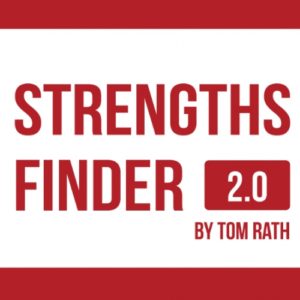How to Engage a Disengaged Employee


Several years ago, the Gallup Organization focused on employee engagement research and determined that a whopping 71% of U.S. workers are disengaged. These employees give poor customer service, lack initiative and don’t go the extra mile. Ultimately, they are costing American companies over $3 billion a year.
So what’s a leader to do? The good news is that many disengaged employees can be turned around. How?
There are several things an employer can do to turn disengaged workers into engaged employees. Conduct your own internal employee survey and ask the question, “What do you need to do your job better?” You’d be surprised at how few will say “more money” and how many of the responses fall into the “small things” category.
As an example, when working at Southwest Airlines, I visited an airport station where several agents were reported to be “not happy”. After spending time with them I discovered that they had been asking for a cushioned mat to be installed behind the ticket counter. Standing all day on the concrete floor hurt their feet, making the time spent servicing our customers very uncomfortable. When the requested mat did not appear, they assumed no one cared and became unmotivated. After I brought this issue to the Station Leader, he immediately ordered and installed the mat. The employees’ attitudes quickly changed and the leader realized he needed to do a better job of listening to the seemingly “small” things people were asking for.
Another way to engage your employees is to find their individual strengths and match  them to projects as needed. In my coaching work I have clients take the Gallup Strengthsfinder assessment to determine what natural strengths they have. I then encourage them to seek assignments that will utilize these strengths. Assignments that play to people’s strengths motivate because they are no longer struggling to do something they are not naturally good at.
them to projects as needed. In my coaching work I have clients take the Gallup Strengthsfinder assessment to determine what natural strengths they have. I then encourage them to seek assignments that will utilize these strengths. Assignments that play to people’s strengths motivate because they are no longer struggling to do something they are not naturally good at.
For example, when putting together a project team, if a person’s natural strengths is ideation (brainstorming), then let them lead the brainstorming. If their strengths are more in alignment with planning or implementation, assign them that portion of the project. By assigning work roles to their strengths, you will motivate them to reengage and contribute in a positive way and as a result, your project will not only go smoother, but likely have a better outcome.
 Another good engagement tactic is to recognize people consistently and often. Have you ever heard of anyone complaining about getting too much recognition? Make sure you are recognizing employees’ efforts in small ways. A card, a quick email, a phone call…these are things that cost almost nothing and will make employees feel like someone cares. When you recognize people’s efforts in small ways, they will continue doing what they know you like and you will reap positive rewards. Create a booklet containing kudos from your customers to share with your team to let them see the impact they are having on the business, then reward them accordingly.
Another good engagement tactic is to recognize people consistently and often. Have you ever heard of anyone complaining about getting too much recognition? Make sure you are recognizing employees’ efforts in small ways. A card, a quick email, a phone call…these are things that cost almost nothing and will make employees feel like someone cares. When you recognize people’s efforts in small ways, they will continue doing what they know you like and you will reap positive rewards. Create a booklet containing kudos from your customers to share with your team to let them see the impact they are having on the business, then reward them accordingly.
Most importantly, get to know your employees. You want your people to tell you what’s on their minds. This will help you correct small problems in a timely manner before they  escalate. It will also help you capture ideas and act upon them quickly. Make it a point to walk around your department often with the goal of talking to your employees. Spend time “team building” in offsite activities to get to know them better. Create fun events like scavenger hunts and join the team as a participant. Leaders who show their willingness to get in the trenches with their people show respect. There simply is no substitute for spending time with your people.
escalate. It will also help you capture ideas and act upon them quickly. Make it a point to walk around your department often with the goal of talking to your employees. Spend time “team building” in offsite activities to get to know them better. Create fun events like scavenger hunts and join the team as a participant. Leaders who show their willingness to get in the trenches with their people show respect. There simply is no substitute for spending time with your people.
Disengaged employees are often regular people who are just burned out or feel like no one cares. They may lack the simple tools and resources to do a better job, or simply need more challenging assignments. By utilizing the tips mentioned above, you will be taking steps to turn disengaged workers into engaged employees. This will have multiple benefits for your organization and your customers.
Lorraine Grubbs is an author, speaker and business consultant helping companies create "Happy Workplaces". Learn more about her work at www.lorrainegrubbs.com



 them to projects as needed. In my coaching work I have clients take the Gallup Strengthsfinder assessment to determine what natural strengths they have. I then encourage them to seek assignments that will utilize these strengths. Assignments that play to people’s strengths motivate because they are no longer struggling to do something they are not naturally good at.
them to projects as needed. In my coaching work I have clients take the Gallup Strengthsfinder assessment to determine what natural strengths they have. I then encourage them to seek assignments that will utilize these strengths. Assignments that play to people’s strengths motivate because they are no longer struggling to do something they are not naturally good at. Another good engagement tactic is to recognize people consistently and often. Have you ever heard of anyone complaining about getting too much recognition? Make sure you are recognizing employees’ efforts in small ways. A card, a quick email, a phone call…these are things that cost almost nothing and will make employees feel like someone cares. When you recognize people’s efforts in small ways, they will continue doing what they know you like and you will reap positive rewards. Create a booklet containing kudos from your customers to share with your team to let them see the impact they are having on the business, then reward them accordingly.
Another good engagement tactic is to recognize people consistently and often. Have you ever heard of anyone complaining about getting too much recognition? Make sure you are recognizing employees’ efforts in small ways. A card, a quick email, a phone call…these are things that cost almost nothing and will make employees feel like someone cares. When you recognize people’s efforts in small ways, they will continue doing what they know you like and you will reap positive rewards. Create a booklet containing kudos from your customers to share with your team to let them see the impact they are having on the business, then reward them accordingly. escalate. It will also help you capture ideas and act upon them quickly. Make it a point to walk around your department often with the goal of talking to your employees. Spend time “team building” in offsite activities to get to know them better. Create fun events like scavenger hunts and join the team as a participant. Leaders who show their willingness to get in the trenches with their people show respect. There simply is no substitute for spending time with your people.
escalate. It will also help you capture ideas and act upon them quickly. Make it a point to walk around your department often with the goal of talking to your employees. Spend time “team building” in offsite activities to get to know them better. Create fun events like scavenger hunts and join the team as a participant. Leaders who show their willingness to get in the trenches with their people show respect. There simply is no substitute for spending time with your people.